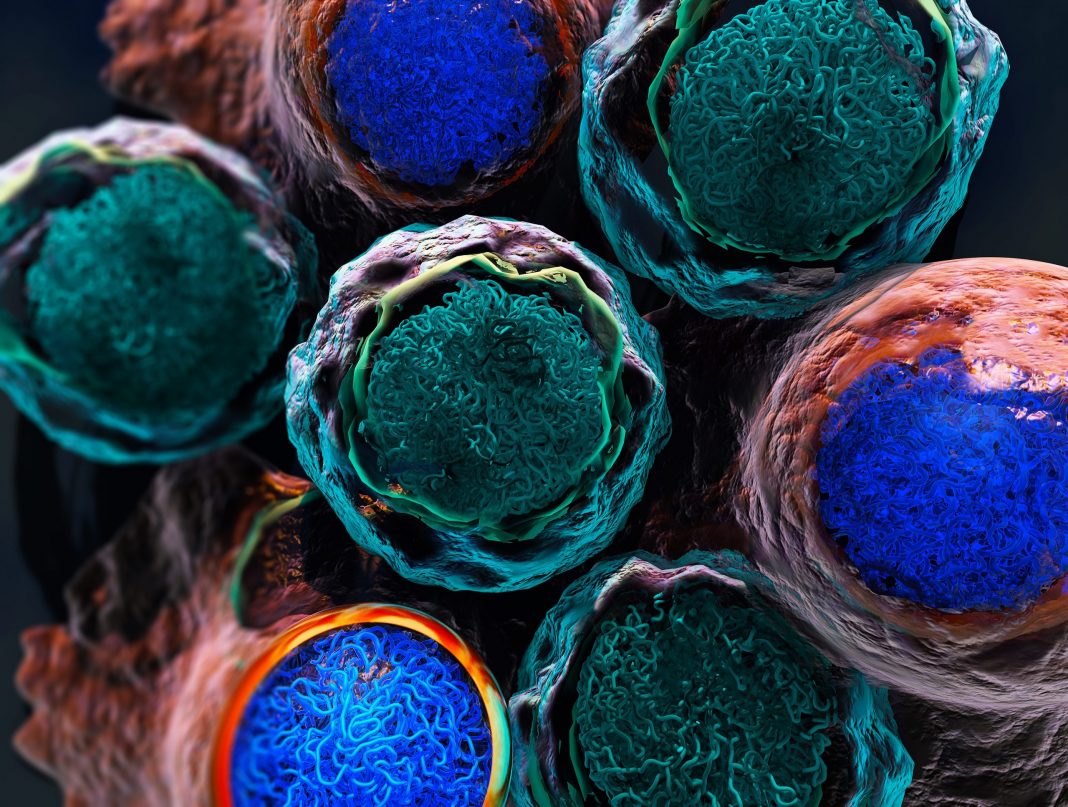Ibrutinib, a drug used to suppress chronic lymphocytic leukemia (CLL), acts through a genetic program shared by all patients. However, the program may be executed quickly, or slowly, depending on the patient. The speed with which the program is executed appears to correlate with molecular markers present in pretreatment patient samples, raising the possibility that these markers could be used to stratify patients into fast and slow responders.
These findings emerged from a study led by scientists at the CeMM Research Center for Molecular Medicine of the Austrian Academy of Sciences. The scientists, led by Christoph Bock, PhD, an expert in medical epigenomics, used immune-phenotyping, single-cell transcriptome profiling, and chromatin mapping to track the response to ibrutinib over time. Ultimately, the scientists determined that ibrutinib induces a very consistent chain of events on cancer cells over time across all patients.
Ibrutinib first acts right at the center of the CLL cells’ activity, causing the genes that establish the cancer cell identity of the CLL cells to shut down, and then puts them in a dormant state. This means that the cancer cells stop dividing but quiescently survive, waiting for the right environmental conditions to begin proliferation once again.
Additional details appeared in a paper (“Chromatin mapping and single-cell immune profiling define the temporal dynamics of ibrutinib response in CLL”) that appeared January 29 in the journal Nature Communications. The paper describes time-dependent cellular, molecular, and regulatory effects for therapeutic inhibition of B-cell receptor signaling in CLL, and it establishes a broadly applicable method for epigenome/transcriptome-based treatment monitoring.
“We identify a consistent regulatory program starting with a sharp decrease of NF-κB binding in CLL cells, which is followed by reduced activity of lineage-defining transcription factors, erosion of CLL cell identity, and acquisition of a quiescence-like gene signature,” the article’s authors wrote. “We observe patient-to-patient variation in the speed of execution of this program, which we exploit to predict patient-specific dynamics in the response to ibrutinib based on the pre-treatment patient samples.”
CLL is the most common form of leukemia in the Western world, affecting approximately 1.2% of all cancer patients. This type of cancer starts with the lymphocytes that are produced in the bone marrow. CLL is characterized by the proliferation of abnormal lymphocytes (B cells) that fail to mature and grow out of control. These abnormal cells accumulate in the bone marrow and lymph nodes, taking the place of other healthy cell types and impeding their normal development. Finding the most suitable therapy for each patient poses a challenge due to the clinical and molecular heterogeneity of this disease, with some patients facing slow disease progression, whereas others face rapid progression and require quick medical response.
The cancer drug ibrutinib, a Bruton tyrosine kinase (BTK) inhibitor, has remarkable efficacy in most patients with CLL. It is becoming the standard of care for most patients requiring treatment due to its clinical efficacy and mostly tolerable side effects. However, it does not cure the disease, and patients must undergo prolonged periods of treatment.
According to Bock’s team at CeMM, CLL cells and other immune cells that respond to ibrutinib manifest distinctive epigenetic and transcriptional patterns. These patterns predict how swiftly the treatment is having an effect on the CLL cells and how long it takes for the disease to respond in each individual patient.
In previous studies, scientists had investigated only specific aspects of the molecular response to ibrutinib, focusing largely on genetic drug resistance or the transcriptome response of cancer cells. In the current study, CeMM researchers tried a new, more comprehensive approach. They conducted a genome-scale, time-resolved analysis of the regulatory response to this drug in primary patient samples.
The scientists simultaneously monitored the activity, regulation, and expression of the CLL cells and other cell types of the immune system. Importantly, they performed this analysis at eight predefined time points during the ibrutinib therapy, following seven individual patients over a standardized 240-day period after the start of the treatment.
After the CeMM team amassed a dataset, they put it through integrative bioinformatic analysis to generate one of the first high-resolution, multi-omics time series of the molecular response to targeted therapy in cancer patients. This work, the CeMM team asserts, establishes a broadly applicable approach for analyzing drug-induced regulatory programs, identifying molecular response markers for targeted therapy.
These results will help develop personalized strategies for managing CLL as a chronic disease, which is particularly relevant for CLL as a disease of the elderly. Also, they will help stratify patients into fast and slow responders based on characteristic molecular markers and open new directions for the development of ibrutinib-based combination therapies for CLL.


